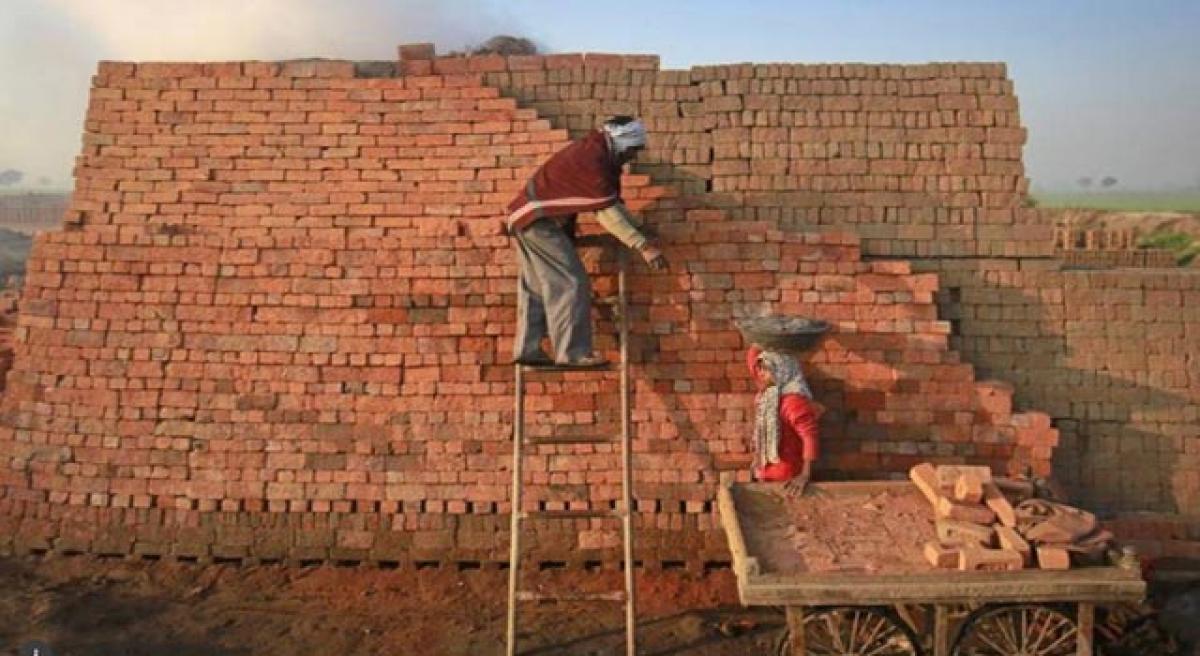Live
- Hyderabad: Woman Crashes Mercedes Benz in Banjara Hills, She Appears Intoxicated
- Traffic cops on the prowl to rein in rogue drivers
- 24,414 may act as strong resistance
- 10 cos gear up to raise Rs 20K cr via IPOs in Dec
- Broad-based trading more likely
- Shocking IPL 2025 Auction: Rishabh Pant Breaks Records with Jaw-Dropping Rs 27 Crore Deal
- Peddireddy Thimmareddy Trust holds 50th medical camp
- Animal Farm: A timeless allegory of power, propaganda and inequality
- Govt gears up for nine-day ‘Prajapalana Vijayotsavalu’
- Man held for siphoning Rs 8.14 cr in trading scam
Just In

Workers rescued from bonded labour in India will be unable to access compensation because the government has linked the benefit to a biometric identity card that most victims do not have, activists said on Tuesday.
Workers rescued from bonded labour in India will be unable to access compensation because the government has linked the benefit to a biometric identity card that most victims do not have, activists said on Tuesday.
Rights campaigners warned that rescued workers could be forced back into bonded labour if they could not claim rehabilitation grants quickly to help them get back on their feet. India, which has announced plans to rescue over 18 million bonded labourers by 2030, increased compensation for rescued workers five-fold last year as part of wider efforts to tackle modern slavery.
But it announced last week that the payouts - like many other welfare benefits - would be linked to the country's Aadhaar card. Aadhaar is a 12-digit identity number issued to Indian residents that requires individuals to register their fingerprints and iris signatures.The government says more than 90 percent of residents now have an Aadhaar number. But rights activists estimate only about 1 percent of bonded workers have one.
"It's impossible for workers bonded in brick kilns to apply for an Aadhaar card. Would an employer allow trafficked workers to register their credentials with the government?" said Nirmal Gorana, head of the National Campaign Committee for Eradication of Bonded Labour.
Requiring rescued workers to apply for a card before they can access compensation will complicate an already lengthy claims process, putting them at further risk of exploitation, he added.
The government says linking social welfare schemes to Aadhaar will weed out bogus beneficiaries and ensure transparent and efficient payouts. It has set a June 30 deadline for workers to enroll or show proof they have applied. India banned bonded labour in 1976, but it remains widespread with millions working in fields, brick kilns, brothels or as domestics to pay off debts.
Rescued bonded labourers are entitled to a rehabilitation grant of Rs 100,000. Rescued child labourers receive Rs 200,000 and victims of trafficking Rs 300,000 . Umi Daniel, regional head of the non-profit Aide et Action International, said the authorities should ensure people are registered for Aadhaar before linking benefits to the card.
"This is imposing an unnecessary condition," said Daniel, a leading activist on bonded labour. "There is a high risk of people falling (back) into the same kind of bondage if the rehabilitation is not done in a sustainable way." India is home to 40 per cent of the world's estimated 45.8 million slaves, according to a 2016 global slavery index published by the Australia-based Walk Free Foundation.
By Roli Srivastava

© 2024 Hyderabad Media House Limited/The Hans India. All rights reserved. Powered by hocalwire.com







